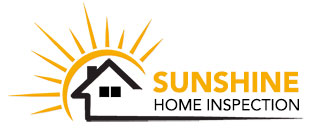Asbestos was once a fantastic material—durable (but brittle), fire-resistant, and cheap. For decades, it was a common component in countless building materials, including roofing. While it offered excellent protection and longevity, the health risks associated with asbestos are now well-known. If you live in an older home, you might be dealing with an asbestos roof but you should know it because the home inspector should have told you.
What is Asbestos Roofing?
In roofing, asbestos was primarily used in two forms:
- Asbestos Cement Sheets: These are flat or corrugated sheets made by combining asbestos fibers with cement. This combination created a weather-resistant, and inexpensive material often used for garages, sheds, and some residential or industrial buildings. The included picture is one that I just took of my neighbors shed. That is asbestos and it’s very easy for a home inspector to identify with extremely high accuracy, at least on a roof.
- Asphalt Roofing Products: Asbestos was also sometimes incorporated into asphalt shingles or roofing felt to improve their strength and fire resistance.
The use of asbestos in most new construction materials, including roofing, has been banned or heavily restricted in many countries since the late 20th century due to its established health hazards, primarily cancer. The U.S. courts have been back and forth on this issue, even though we have known asbestos is carcinogenic or dangerous since around 1975. As a home inspector, environmentalist and former professor of meteorology, I can see that this is a clear example of corruption and irresponsibility of our government and special interest. Some asbestos products are allowed to be used today and I assert that just about all Americans have asbestos fibers in their lungs already, if you live in a metropolitan area. But the goal should be to keep that level low.
The Danger: Why Is Asbestos Hazardous?
The risk with asbestos lies in the tiny, airborne fibers. It’s a natural product that is mined out of the ground so it is naturally occurring in nature, and I think most of it comes from Canada. When materials containing asbestos are disturbed, cut, sanded, or damaged, these small and sometimes microscopic fibers can be released into the air. They can float for a long time because of how lightweight it is and therefore barely affected by gravity.
- Inhalation: Once inhaled, the sharp fibers can become lodged in the lungs and abdomen and don’t break down very much.
- Health Risks: Over time, exposure can lead to serious, life-threatening diseases, including asbestosis, lung cancer, and mesothelioma, a rare and aggressive cancer. Data can be found on government web sites.
Key Takeaway: Intact, undisturbed asbestos roofing material generally poses a low risk. The danger significantly increases when the material is damaged or actively deteriorating.
Dealing with an Asbestos Roof: What Should You Do?
If you suspect or know your roof contains asbestos, here are the general guidelines for safe management:
1. Assess the Condition
The crucial first step is to determine the roof’s condition.
- Good Condition: If the roof is intact, not crumbling, and not releasing fibers, the safest and often most cost-effective approach is leaving it alone and monitoring it. The fibers are encapsulated by the cement or asphalt, minimizing exposure risk.
- Poor Condition: If the roof shows signs of cracks, breakage, flaking, or heavy weathering, it may be time to take action, as fibers may be releasing into the environment.
2. Hire Professionals
Never attempt to repair, clean, or remove an asbestos roof yourself. You will fail at trying to contain the material. This is the fastest way to disturb the material and create a significant health hazard.
- Testing: If you’re unsure if a material contains asbestos, a licensed home inspector can take a sample for lab analysis. I have been identifying and testing asbestos and other things like toxic mold for over 15 years.
- Maintenance & Removal: Only licensed asbestos abatement professionals should handle repairs or removal. They have the specialized training, equipment, and legal authorizations to safely contain, remove, and dispose of the hazardous waste according to strict regulations. You have to be careful because a neighbor may know that it’s asbestos and could call the city if you try to remove it yourself or pay cheap labor. This puts your neighbors in harms way, as well as yourself and the workers. I can tell you that I would prevent my neighbors from removing theirs without professional help.
3. Removal vs. Encapsulation
When the roof is in poor condition, you have two primary options:
- Encapsulation (Overlay): This involves applying a protective sealant or covering (like a new roof layer) over the existing asbestos material. This effectively seals the asbestos in place, preventing fiber release. It’s often cheaper than removal, but the asbestos remains on your property.
- Full Removal: This is the most complete solution, eliminating the hazard entirely. It’s expensive, labor-intensive, and requires specialized waste disposal, but it removes the long-term liability.
Final Thoughts on Safety Asbestos roofs are a relic of a bygone era of construction. While they present a unique challenge for homeowners, they are manageable with the right knowledge and caution. Prioritize professional assessment and handling. When dealing with asbestos, your health and the health of your family and neighbors are paramount.






